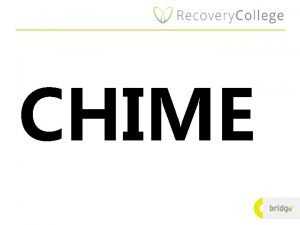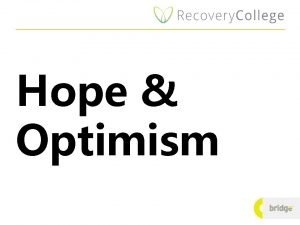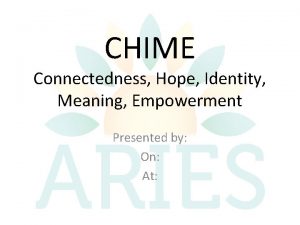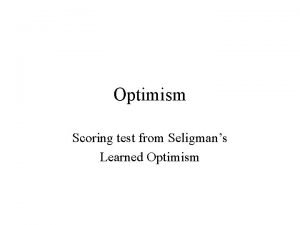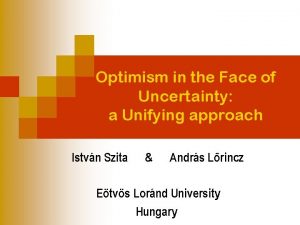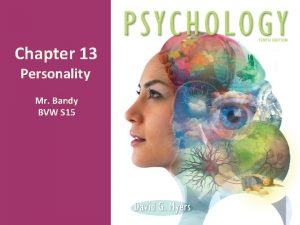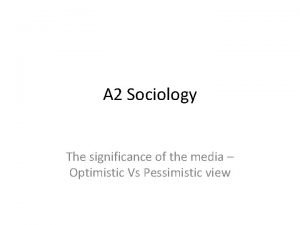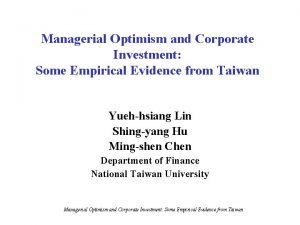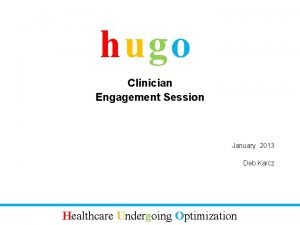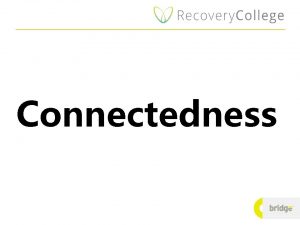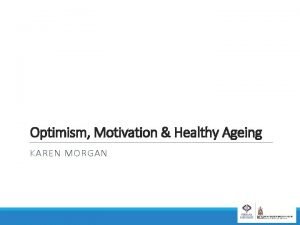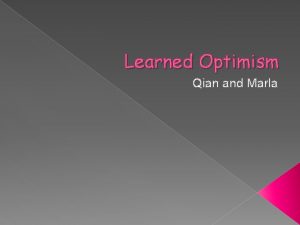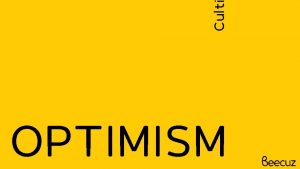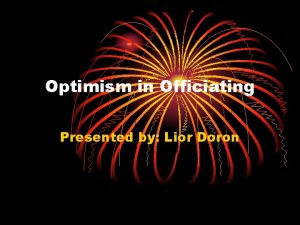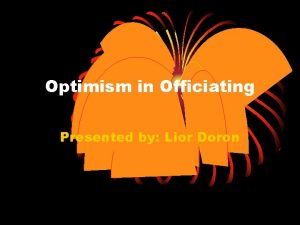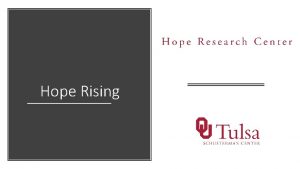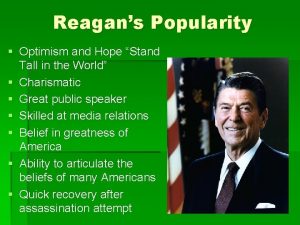Hope Optimism CHIME The CHIME framework for personal
















- Slides: 16

Hope & Optimism

CHIME The CHIME framework for personal recovery Connectedness • Peer support and social groups • Relationships • Support from others • Community Hope & optimism • Belief in recovery • Motivation to change • Hope-inspiring relationships • Positive thinking and valuing effort • Having dreams and aspirations Identity Meaning Empowerment • Rebuilding positive sense of identity • Overcoming stigma • Meaning in mental health experience • Meaningful life and social roles • Meaningful life and social goals • Personal responsibility • Control over life • Focusing upon strengths Leamy et al. 2011

“Life begins on the other side of despair. ” Jean Paul Satre

Hope in a recovery context • Hope is the starting point of recovery. • Hope is believing in the possibility that things can get better. • Hope can be cultivated by the person seeing how they can have more active control over their life (‘agency’) and how others have found a way forward. • With hope anything is possible.

Hope “HOPE is the little voice you hear whisper “maybe” when it seems the entire world is shouting “no. ” When the world says “give up”, Hope whispers “try it one more time. ” “See life as it is, but write about life as it might be. ” “With every breath, there is new opportunity – new choices, new hope. ”

Hope Consider the following questions: • What currently brings you hope? • Who around you is hopeful for you? • Can you think of any ways to boost your level of hope? • What is hope telling you about your next step? • What is it like hearing yourself talk about hope?


Prompt questions: • What do you think the poem 'The Journey’ is about? • What is the person in 'The Journey' struggling with cutting ties with? Mary Oliver and The Journey is a poem that focuses on the need to leave behind what is bad and wrong and harmful and start out on a new path. It has become a popular poem for those seeking guidance and strength in their lives. The Journey uses the idea of a physical journey to relate the internal transformation that comes when you start listening to your own voice. It's about finding your voice and becoming your one, true self.

Realistic Optimism Life is full of paradoxes. It can be beautiful. It can be sad. But here’s the rub, to really live life, we have to allow ourselves to experience the full spectrum of what life has to offer. Realistic optimism means seeing things as they are, accurately, and then making the best of them. It is not about wishful thinking, and it is certainly not about ignoring problems. Making the best of things might mean you make radical changes to a situation. It is also engaging with life positively and constructively. Ask yourself, what is the most helpful way to look at this current situation? It’s about taking personal responsibility for your choices.

Broaden and Build Theory When experiencing negative emotions, you are likely to see the world in with tunnel vision. This can be very useful when you are in danger, as you need to take action quickly in such situations. When experiencing positive emotions, the blinders come off and you are able to see all possibilities that exist. In other words, positive emotions broaden your mindset rather than narrow it the way negative emotions do.

Broaden and Build Theory • Broaden and Build Theory was developed by positive psychologist, professor Barbara Fredrickson. The theory says that positive emotions do much more than make us feel good in the moment. • Rather, when we experience them consistently, it helps us build our physical, intellectual, social, and professional resources over the long-term. In short, when people are happy, they become increasingly innovative, effective and resilient. • Positive emotions serve a purpose of broadening people’s minds as well as building their resources. • Experiencing a higher ratio of positive to negative emotions results in enhanced intellectual resources (e. g. problem solving), physical resources (e. g. cardiovascular health), social resources (i. e. the ability to maintain relationships), and psychological resources (e. g. optimism).

Broaden and Build Theory Positive emotions serve a purpose of broadening people’s minds as well as building their resources. (Fredrickson, 2000)

Positive Experiences Write briefly about when you displayed each of the following qualities. Courage Determination Kindness

Three Good Things (Seligman et al, 2005) • Write down, before going to sleep, three good things that happened to you today. • They can be small or large, something you did or something that happened to you (e. g. nice weather, you smiled at somebody and they smiled back, you felt healthy or achieved something, a piece of good news). • Do this everyday for two weeks.

Three Good Things (Seligman et al, 2005) Why does it work? We have a natural negative bias so we are good at focusing on what’s wrong – or what might go wrong – and not so good at appreciating what has gone well. What are the benefits? People who do this for two weeks have shown to be significantly happier – and much less likely to be anxious or depressed. What is the figure and what is the background in your life? The positive or the negative?

 The chime framework for personal recovery
The chime framework for personal recovery Broaden and build theory
Broaden and build theory Chime connectedness
Chime connectedness Uninformed optimism curve
Uninformed optimism curve Learned optimism test pdf
Learned optimism test pdf Optimism in the face of uncertainty
Optimism in the face of uncertainty Optimism vs pessimism
Optimism vs pessimism Optimism vs pessimism
Optimism vs pessimism Authentichappines.or
Authentichappines.or Optimism
Optimism Uninformed optimism
Uninformed optimism Therapeutic optimism
Therapeutic optimism Flitpit
Flitpit Abiw instrument
Abiw instrument Chime
Chime Chime eas
Chime eas A sound wave produced by a clock chime is heard 515
A sound wave produced by a clock chime is heard 515
